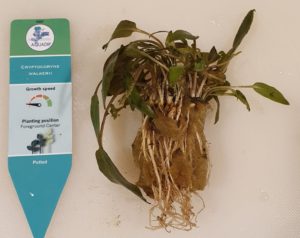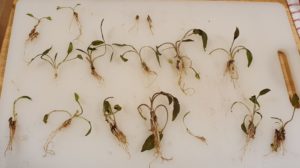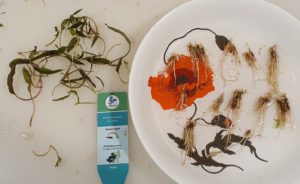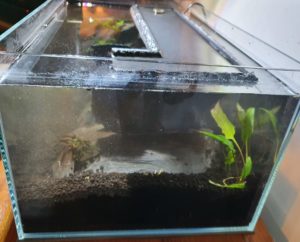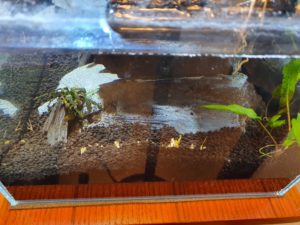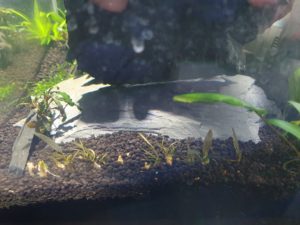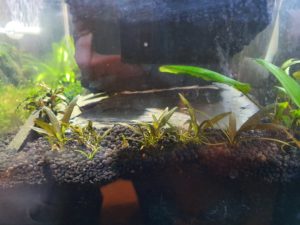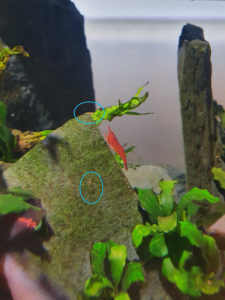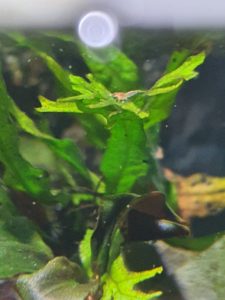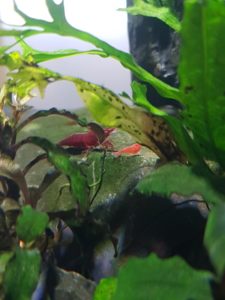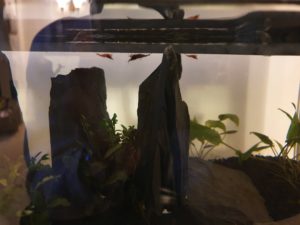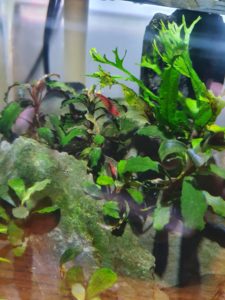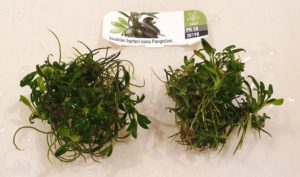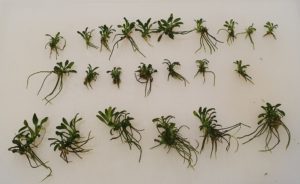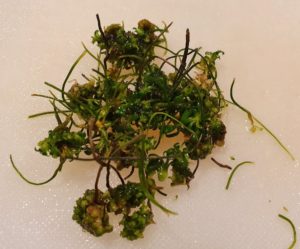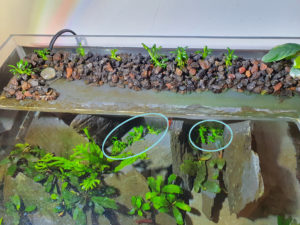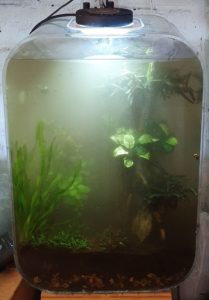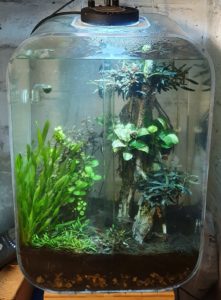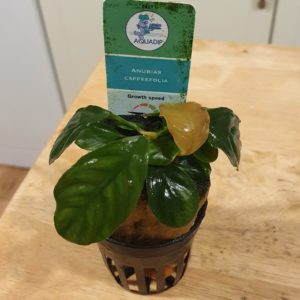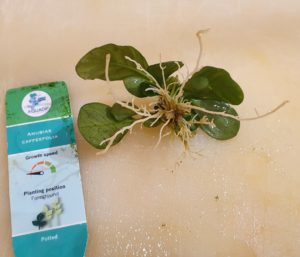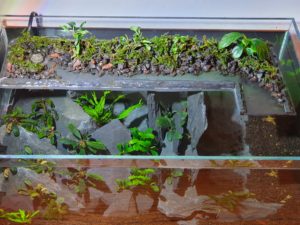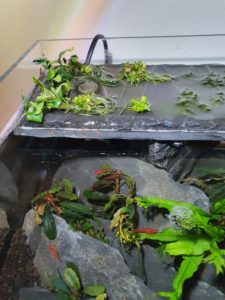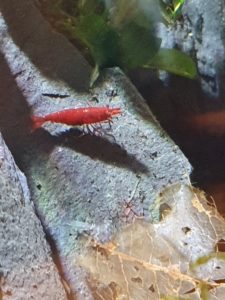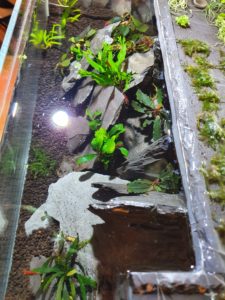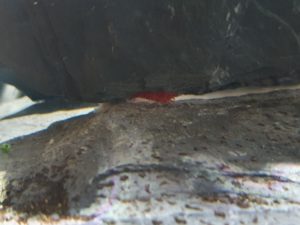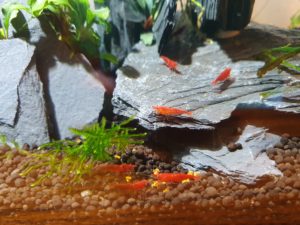I’m becoming more fond of Cryptocoryne as submersed aquatic plants. They come in a wide variety of colours, sizes and textures, tolerate low light and are pretty much maintenance free. I always plant these after cutting off the emersed leaves to promote faster Cryptocoryne adaptation to submersed form growth whilst avoiding ‘crypt melt’.
Cryptocoryne walkeri in a low tech aquarium
C. walkeri raised by Aquadip was sourced from Pro Shrimp and has been thriving in the Shrimphaus for a little over three months now. As usual with potted Cryptocoryne, you tend to get many individual plantets in a single pot.
I may have shaved these down a little close to the crown. Going forward I’m going to leave a small amount of the emersed form stems on to avoid scalping the new plants.
Aquadip says C. walkeri is ‘easy’ and that has certainly been my experience. The submersed form has attractive medium-dark green leaves. Walkeri and most other crypts are generally considered to be slow growing, but I have found the growth rate to be pretty reasonable even without injected CO2 gas in the ‘low tech’ Shrimphaus.
